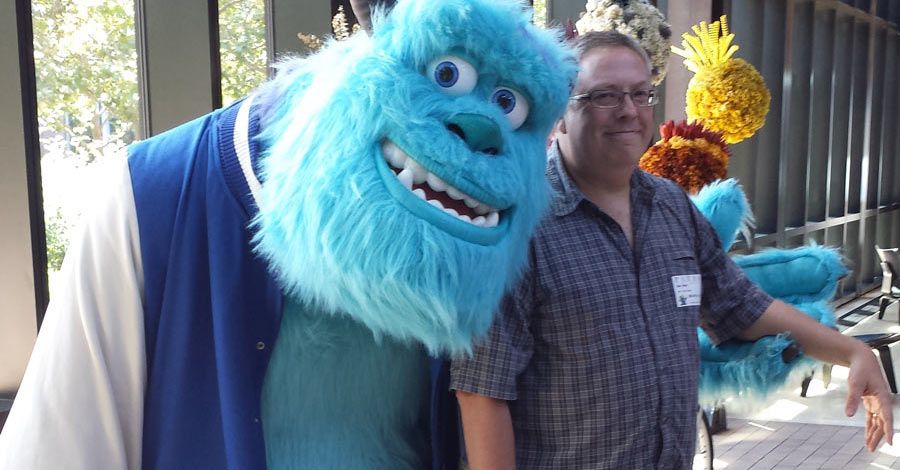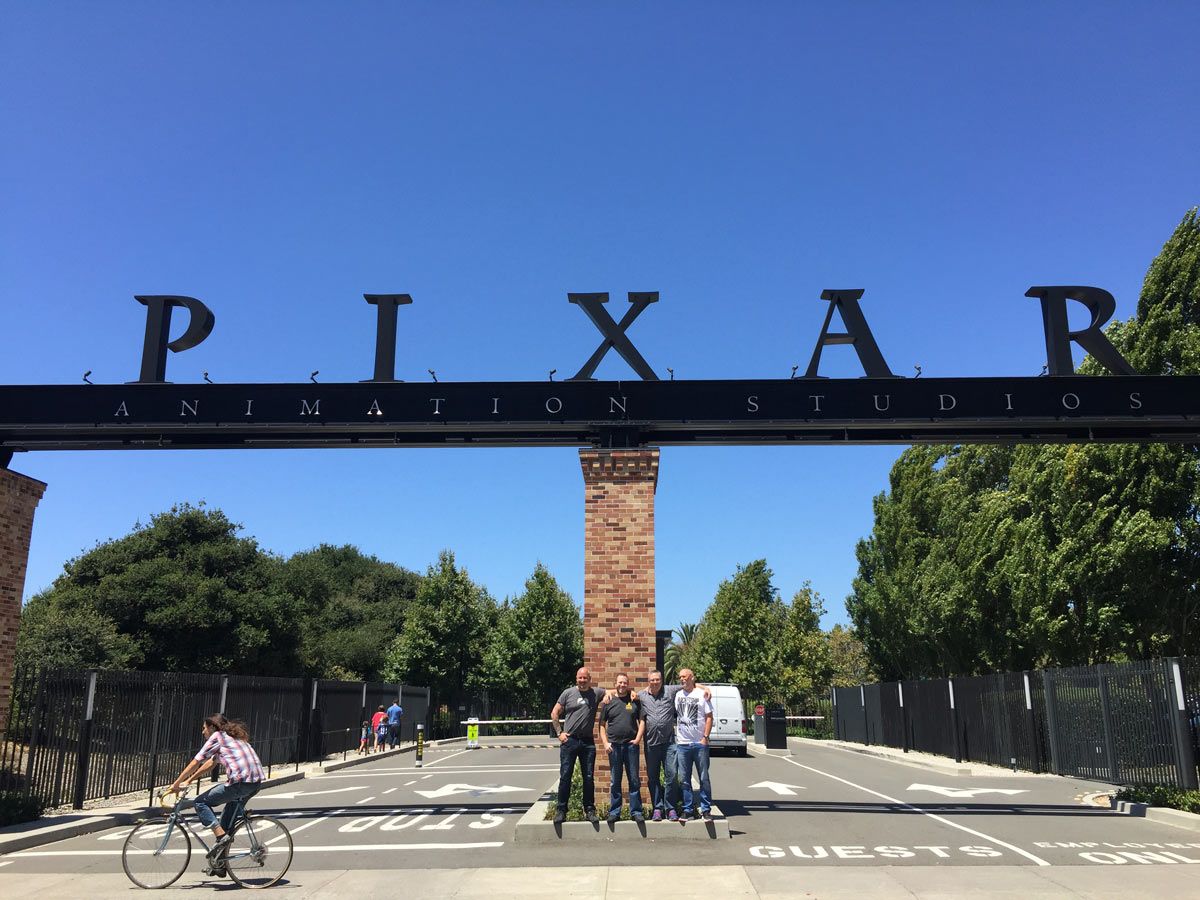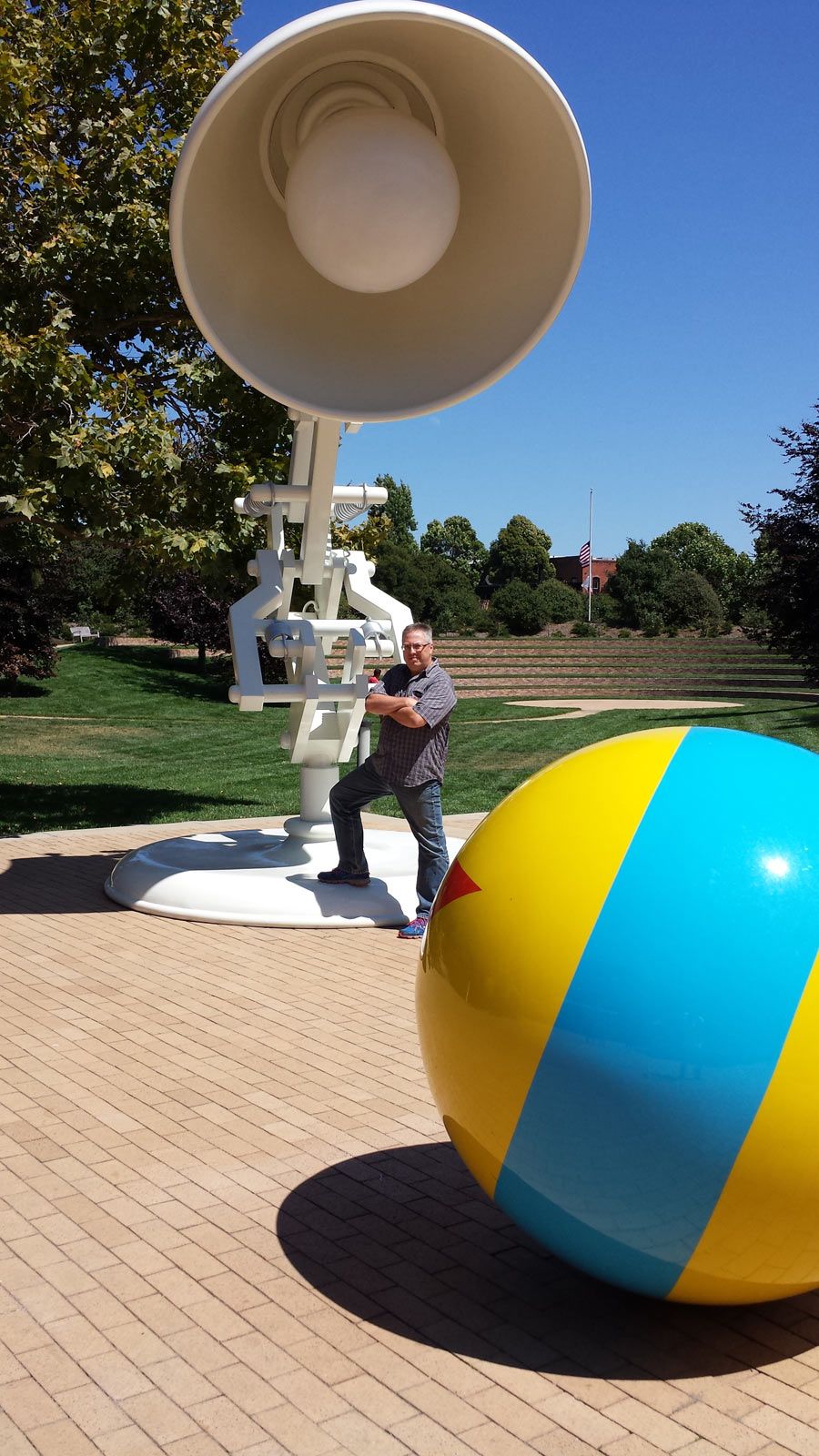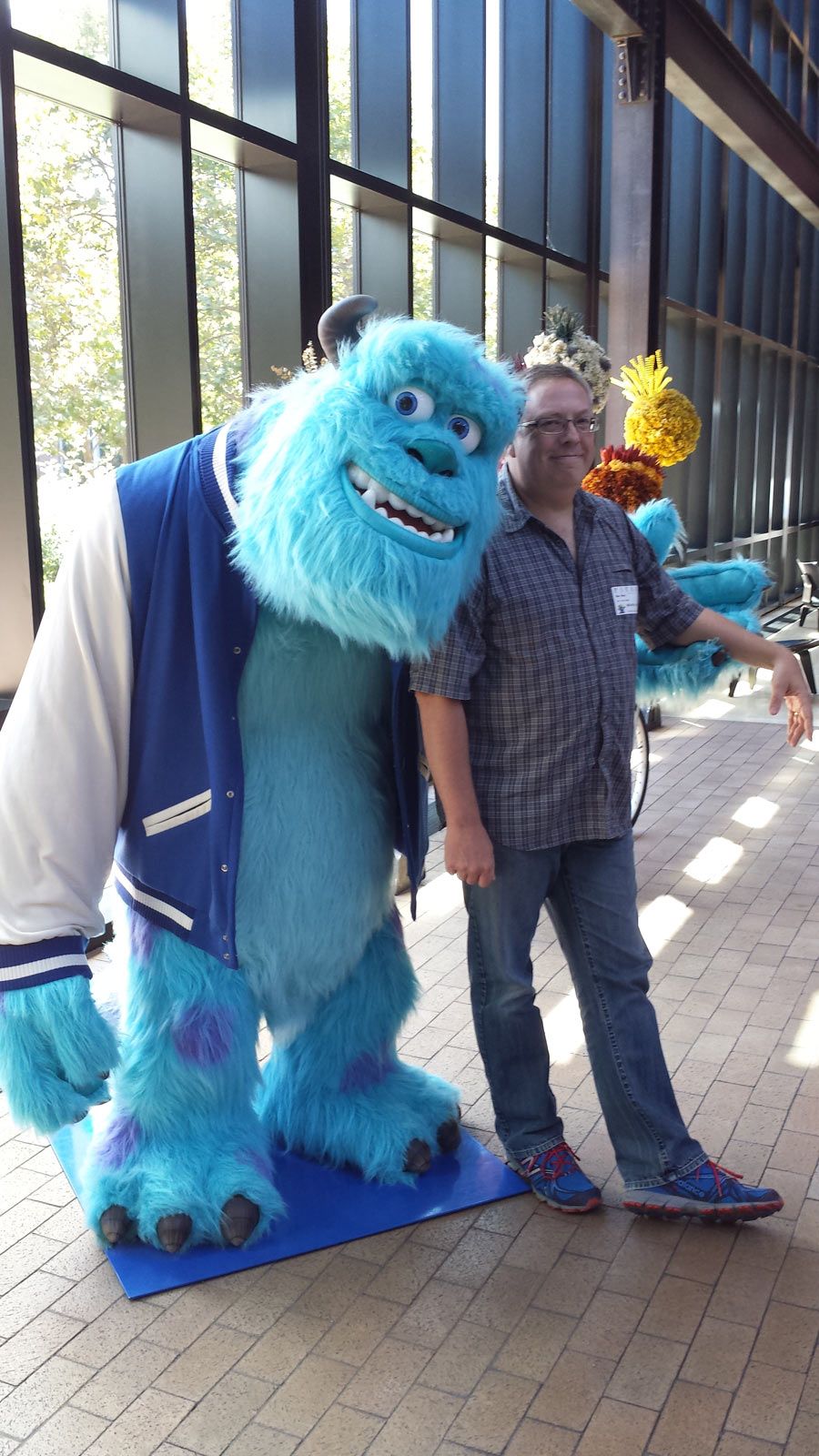Creating a Creative Sanctuary
Last week in California, I visited a magical place. No, not the one with the mouse ears and Cinderella's castle. This magical place is in Northern California, in Emeryville in the Bay Area. The sign above the entry gate reads Pixar Animation Studios.
I was in California to see the band Rush, on what's likely to be their final tour. Yes, I flew across the country to see a concert by a band that's always been a favorite, but I'd never seen live. So I used frequent flyer miles to book a flight -- the benefit of flying to a number of conventions the last few years -- and paid way too much money on StubHub for tickets to Rush's San Jose show. This was a plot I hatched with my friend and uber-Rush fan Andy Lanning, who was just finishing up a California vacation with his family.
Andy and I both work for Florida-based augmented reality startup Magic Leap, so the trip was going to be half business and half... well, concert. We made plans to visit Berkeley-based motion books developer Madefire, which I'm working with to turn "The Protectors" from ATHLiTACOMICS into a motion book. (The teaser chapter is already available for free.)
Then Andy told me that thanks to Madefire's connections, he'd been able to get us in for a tour at Pixar... which is coincidentally about a 20-minute, straight-line walk from Madefire's offices. Suddenly, the concert was the second-most interesting thing on the agenda.
The concert was tremendous, nearly three hours encapsulating Rush's career, starting from the most recent album and working all the way back to the band's 1970s roots, deconstructing the stage set as they went. If that's the only time I get to see Rush play live, it was worth the travel and expense.
The next day, prior to our scheduled Pixar visit, we had lunch at Rudy's Can't Fail Cafe, co-owned by Green Day bassist Mike Dirnt. Any place named after a Clash song is okay in my book. Menu favorite: the Shakin' Jesse Milkshake, made with Guinness and espresso.
After lunch, we walked down the fenced block to Pixar's front gate. Andy and I were joined by Madefire co-founders Liam Sharp and Ben Wolstenholme, and Cameron Petty, a game designer with Magic Leap. Once we were past the security booth, the Pixar campus spread out in front of us: impressive buildings, a small, open-air amphitheater, soccer field, swimming pool, basketball court. In front of the main building, there's a wide patio and giant statues of the Luxo lamp and ball from Pixar's first short. You immediately know you're not at just another office complex.
The main building is named after Steve Jobs, the driving force in its creation and design. Built in a modern arts-and-crafts style, the huge atrium is filled with natural light, not to mention a life-size Sully from "Monsters University," and a display case overflowing with Academy Awards.
The atrium is Pixar's hub, with an abundantly-stocked commissary, mail room and a wealth of tables for eating and meeting. The theory is that everyone in the company has to come through the atrium each day, rather than bunkering themselves in their offices. Discussions are had, ideas are spawned, problems solved. Even during our visit, a bit after lunch hour, the place hummed with energy and activity.
We toured an art gallery featuring work in a variety of media from current release "Inside Out." It was a peek into Pixar's legendarily successful creative process, the careful honing of concepts and characters. A second gallery featured personal work by production artist Steve Pilcher from his beautiful children's book "Over There." Pixar encourages and supports its employees to pursue creative outlets beyond their staff duties.
We saw wall-size color scripts for films, more life-size sculpts including Bruce the Shark from "Finding Nemo" and the entire team/family from "The Incredibles." I sat in a leather chair saved from Disney's famed animation building. The screening room in another building shamed almost any other theater I've ever been in.
Everything we saw was beautifully designed and constructed. I've never been in an environment that felt as creatively nurturing. At one point, I whispered to Andy, "I don't want to work here, I want to live here."
I couldn't help but be reminded what late, lamented CrossGen Comics aspired to be some day. Not on the scale of Pixar, of course, but at least in well-intentioned spirit. There were actually plans to build a new, lavish office someday on some property Mark Alessi owned. The land was just a couple miles from my house, I could've biked or even walked to work. There were visions of sizable complex to replace the relatively non-descript office park we were in.
One of CrossGen's founding principles was to treat creators like valuable assets, instead of interchangeable cogs. The lofty ideal was to reward creators with salary, benefits, vacation time, sick time, and a piece of the profit pie, putting them in an environment where they could do their best work. All of it was the opposite of the freelance experience. Of course, thanks largely to hubris, none of it survived.
In comics, it often seems the creative personnel aren't valued overly much. Our industry is, to great extent, a freelance-based business. At least on work-for-hire jobs, we're ultimately all replaceable, we're all the next person in a long succession of creators. You pick up the ball and carry it for a while, and then it's someone else's turn. That's not necessarily a complaint, but rather an acknowledgement of reality. There's a sense of cooperation and comradeship between freelancers, but there's also competition. We're all competing for a finite number of gigs, and it's a constant scramble. That's also reality.
Obviously touring Pixar was a radical departure from anything I'm used to, so I'm still trying to wrap my head around the experience. To be not just compensated, but nurtured and inspired, is a rare gift. Yes, of course I realize the scale of economy is far different than that of publishing comics. Pixar is wildly successful creatively as well as financially. They're reaping the rewards of their vast box office success, and using it to create an environment that engenders future success. I was just a visitor for a few hours, and I walked away feeling more inspired and invigorated than I have in a long time. That's why it's magical.
Earlier today, I was chatting with my friend Jim Demonakos, founder of Emerald City Comicon and now ReedPop's Director of Comic Talent. Jim told me he's visited Pixar on three occasions, and loved the experience every time. He summed it up perfectly: "It just makes you want to make things."
Ron Marz has been writing comics for two decades, and thinks it's pretty much the best job ever. His current work includes "Witchblade" and the graphic novel series "Ravine" for Top Cow, "The Protectors" for Athleta Comics, his creator-owned title, "Shinku," for Image, and Sunday-style strips "The Mucker" and "Korak" for Edgar Rice Burroughs, Inc. Follow him on Twitter (@ronmarz) and his website, www.ronmarz.com.






